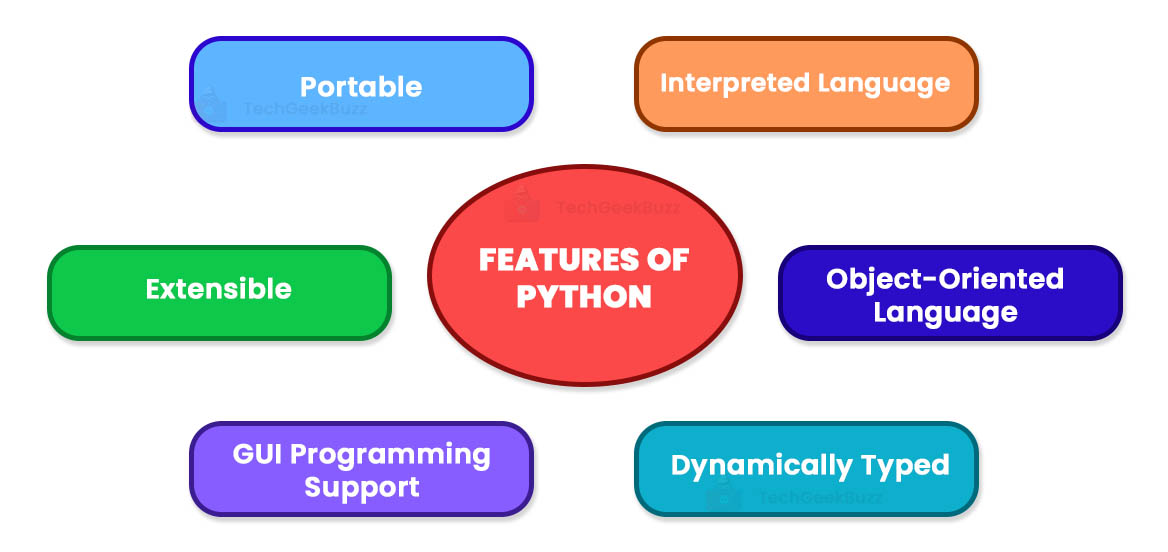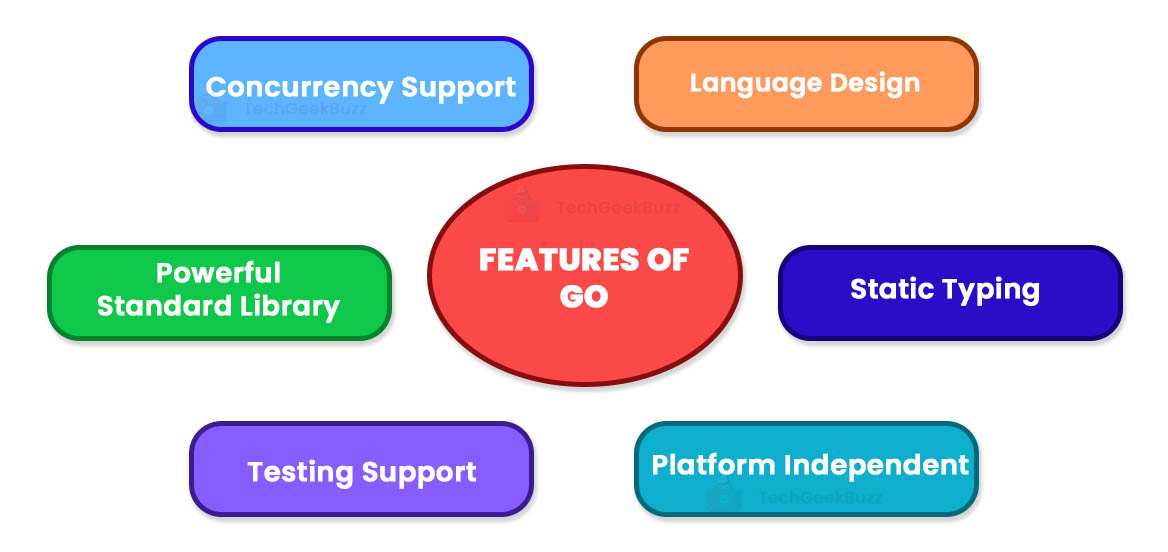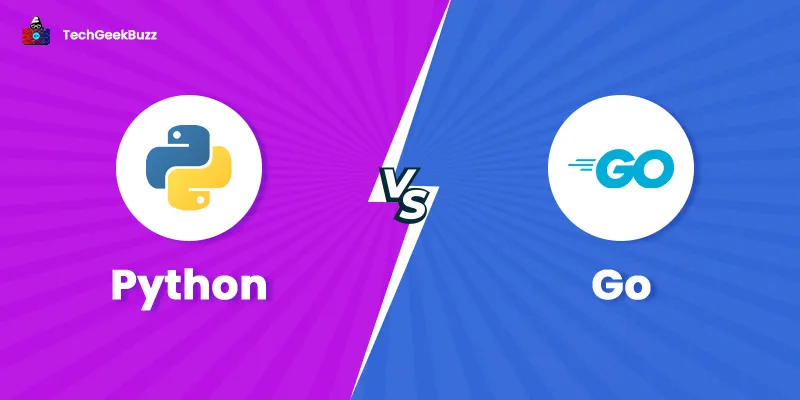A programming language is the heart of the development process since it can make or break a project. However, programmers often get confused in choosing the right programming language for their projects. Many developers struggle to choose between Python and Go, as both are among the most prominent programming languages. However, these programming languages are dissimilar.
Python has existed in the programming world since 1991, whereas Go is a new language released in 2012. Python is a general-purpose, interpreted, high-level programming language that follows the object-oriented paradigm. On the other hand, Go is a compiled language that follows the procedural programming paradigm .
If you wish to explore all the major differences between Python and Go, you have landed at the right place. This article will enlighten you about the key differences between Python and Go. Also, it will help you get familiar with the features, advantages, and disadvantages of Python and Go.
So, let us get started!
Python vs Go: Head-to-Head Comparison
The following table draws the key differences between Python and Go:
| Parameters | Python | Go |
| Definition | Python is an interpreted, general-purpose, high-level programming language developed by Guido Van Rossum. | Go, also called Golang, is a compiled programming language developed by Robert Griesemer, Rob Pike, and Ken Thompson. |
| Programming Paradigms | It follows object-oriented, structured, and functional programming paradigms. | It follows procedural, concurrent, and imperative programming paradigms. |
| Dynamically or statically-typed | Python is a dynamically-typed language, i.e., you do not have to define the data type of variables while declaring them. | Go is a statically-typed language, i.e., you do have to define the data type of variables while declaring them. |
| Inheritance | Python does not support inheritance. | Go supports inheritance. |
| Classes and Objects | Since Python supports the object-oriented programming paradigm, it has classes and objects. | This language does not use classes and objects. |
| Exceptions | Python supports exceptions. | Go does not support exceptions. Instead, Go has errors. |
| Ideal for | This language is ideal for developing web applications and analyzing and visualization data. | Go is ideal for system programming. |
| Goroutines and Channels | Python does not support Goroutines and channels. | This language supports Goroutines and channels. |
| Concurrency Mechanism | It does come with a built-in concurrency mechanism. | It fully supports the concurrency mechanism since it is a concurrent language. |
What is Python?
Python is a general-purpose, interpreted, and high-level programming language. It complies with various programming paradigms, such as object-oriented, functional, structured, and procedural. The design philosophy primarily emphasizes code readability with the use of indentation.
Moreover, Python is a garbage-collected and dynamically-typed language. It comes with a standard comprehensive library. Hence, it is described as ‘batteries included’. The syntax of the language is simple and easy to understand. It uses simple English keywords and whitespace indentation. It avoids using semicolons after the end of a statement and curly brackets to delimit blocks.
History
Guido van Rossum started developing Python in the late 1980s at Centrum Wiskunde & Informatica (CWI) in the Netherlands. He released Python 0.9.0 in 1991 as a successor to the ABC programming language. He was the lead developer in the development of Python till 2018. Later, he announced his permanent vacation from the responsibilities as Python’s "benevolent dictator for life".
In October 2000, Rossum released Python 2.0 with additional features, such as support for Unicode and a cycle-detecting garbage collector. He then released Python 3.0 in December 2008. This version of Python was a complete revision to the language.
The year 2020 witnessed the end of Python 2.7, and only Python 3.6 and later are supported. Python is available under the Python Software Foundation License, and the latest stable version of Python is Python 3.10.
Features

Here are some remarkable features of Python :
- Interpreted Language: Python is interpreted since the interpreter executes the Python code line by line. Also, the Python interpreter converts Python code into an intermediate form called bytecode.
- Object-Oriented Language: Since Python uses classes and objects in programming, it is object-oriented.
- Dynamically Typed: Python does not require you to define the data type of variables while declaring them. It decides the data type of variables at the runtime.
- GUI Programming Support: Python comes with various modules, such as PyQt4, wxPython, PyQt5, and Tk, that enable you to develop an attractive graphical user interface (GUI).
- Extensible: Python is an extensible language, i.e., you can extend Python to other programming languages. You can write some Python code in other languages, such as C or C++.
- Portable: Python code written on the Windows system can run on other operating systems, such as Linux, Unix, or macOS, without any changes.
Advantages
The following are the advantages of Python:
- Python is easy to learn and use since it has an English-like syntax.
- It has a simple and less complicated syntax. Thus developers can focus more on solving an actual problem rather than spending a lot of time understanding the complex syntax.
- Python is a free and open-source language.
- The standard library of Python incorporates a wide array of functions you need to accomplish your task. You do not have to depend on external libraries.
- You can accomplish a particular task faster by writing fewer lines of code in Python than in other languages, such as Java, C, C++, etc.
Disadvantages
Some of the major drawbacks of Python are as follows:
- It executes code line by line as an interpreted language, leading to slow execution.
- Python consumes a large amount of memory. Therefore, it is not ideal for developing applications that prefer memory optimization.
- The database layer of Python is underdeveloped compared to other technologies, like JDBC or ODBC.
- Since Python is memory inefficient and has a slow processing speed, it is weak in mobile computing.
When to Choose Python?
Python is a general-purpose language that you can use to develop various applications. When you want to build responsive websites, software applications, machine learning and artificial intelligence-powered systems, and video games, you can opt for Python. In addition, Python is the most preferred language among data miners and data scientists for data analysis and data visualization .
What is Go?
Go is a statically typed and compiled programming language. It also follows concurrent and imperative programming principles. The syntax of Go is analogous to C, but it provides features such as garbage collection, structural typing, CSP-style concurrency, and memory safety. Go is often called GoLang because of its former domain name, golang.org.
History
Robert Griesemer, Rob Pike, and Ken Thompson started designing the Go language at Google in 2007. The primary motive of these designers was to improve programming productivity. They wanted to address the criticism of other programming languages used in Google at that time but maintain their characteristics, such as
- Static typing and runtime efficiency of C.
- Readability and usability of Python and JavaScript .
- High-performance networking and multi-processing.
In November 2009, these designers announced Go publicly and released version 1.0 in March 2012. After that, Google used this language to produce many of its products. Also, Go was used in many other open-source projects and organizations.
Two designers, in November 2016, Charles Bigelow and Kris Holmes, released Go and Go Mono fonts for use by the Go Project. The font, Go, is humanist sans-serif, whereas Go Mono is monospaced. Both these fonts adhere to the WGL4 character set. The Go language is available under the 3-clause BSD license, and the latest version is version 1.17.
Features

The following are the salient features of Go:
- Language Design: The primary motive of Go is ‘Do More with Less”. The designers aim to make this programming language simpler and easier to understand than other programming languages. The entire specification of Go is in a few pages. Also, the designers made the design decisions via object-oriented support in this language. It is an opinionated language and prefers composition over inheritance.
- Static Typing: Go is a statically typed language. The Go compiler works on compiling code successfully and takes care of type conversions. Therefore, using the Go language eliminates all the issues you face while using any dynamically typed language.
- Platform Independent: Like Java, Go is a platform-independent programming language.
- Testing Support: Go provides the feature of unit testing. It enables you to write unit tests in parallel with source code, which helps you understand the code coverage of your tests.
- Powerful Standard Library: Go has a standard library comprising multiple packages. It provides all essential components that a developer may require to access from third-party packages while working with other programming languages.
- Concurrency Support: Unlike other programming languages, Go offers first-class and easier concurrency support. This feature of Go enables developers to accomplish their tasks quickly.
Advantages
Some notable benefits of Go are as follows:
- Go is a simple and easy-to-understand language since it is syntactically analogous to C.
- It allows multiple processes to run simultaneously and effectively.
- Code written in Go compiles at ninja speed, i.e., the compilation time is very fast.
- The standard library of Go enables developers to write code quickly and efficiently.
- Since it supports automatic garbage collection, you do not have to worry about memory management.
- It is ideal for large-scale software engineering.
Disadvantages
Here are some significant downsides of Go:
- Go does not provide a UI toolkit.
- Though it is a simple language, it lacks versatility, like Haskell and Swift.
- Go is a new language and is still in its adolescence.
- It has no support for generics.
When to Choose Go?
The Go language was primarily designed for applications or programs related to networking and infrastructure. You can choose Go for the following scenarios:
- Building cloud-based or server-side applications.
- Developing command-line tools.
- Data science and artificial intelligence.
Python vs Go: Which One to Choose?
Python is a more popular language than Go. Also, Go is a new language and is still developing. Both Go and Python are easy to learn and understand in terms of syntax. Python follows the object-oriented programming paradigm, whereas Go does not.
On the contrary, Go supports Goroutines and channels, whereas Python does not. Regarding productivity, Go outperforms Python because it was designed to be simpler and increase programming productivity. Concerning versatility, Python has the edge since it is a general-purpose programming language with a comprehensive standard library.
It is important to note that Go and Python are highly different programming languages and serve different purposes. Python is the most preferred programming language among data scientists for data analysis. Also, it is widely used for developing web and software applications and AI and ML models. Conversely, Go is a go-to language for building server-side and cloud-based applications. Therefore, it is better to choose between Python and Go depending on the nature of your project.
Conclusion
To wrap up, Python and Go programming languages have their own features, benefits, and use cases. Both these languages intend to make coding easier for developers by providing simple and easy-to-understand syntax. If you want to build an application with the primary aim of speed and scalability, we recommend you choose Go.
On the other hand, Python is a general-purpose and versatile language. So, you can choose Python for data science, data visualization, web and software development, and automation. We hope this article has helped you understand how Python and Go are different from each other. If you have any queries related to this topic, feel free to share them in the comments section below.
People are also reading:





Leave a Comment on this Post